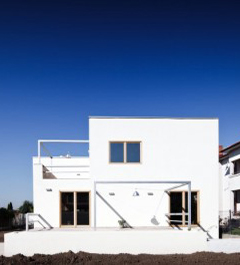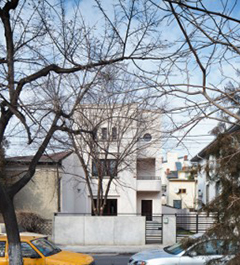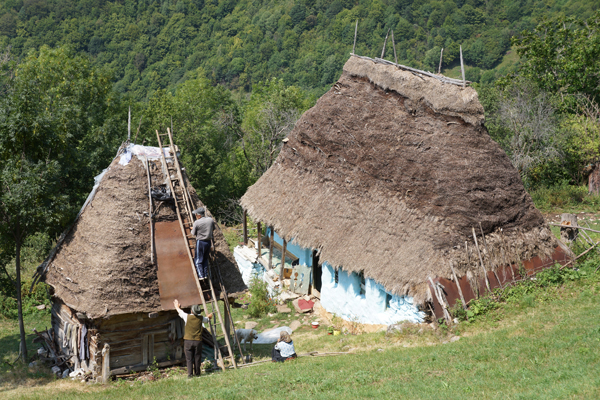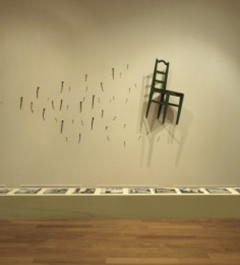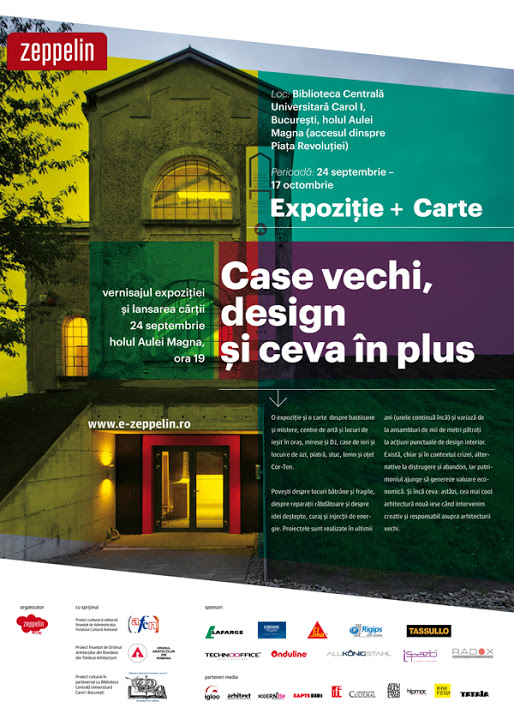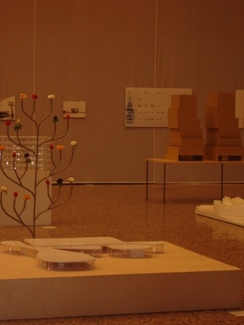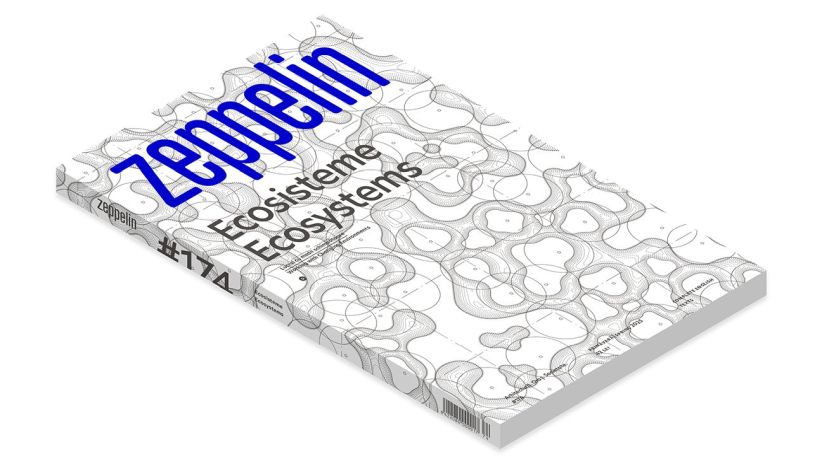From a recent ruin to a house: recovering and repairing ask for an architectural action, that differs both from restoring and creating a new work.
The project of this house is a rather unusual type of intervention. This is not the continuation of a project or the adjustment to a context. We called it repair works. The repair works of a recent ruin is something else than the intervention on an old house. An old space has a couple of sensitive elements, a spirit, perhaps good proportions or well-aged finishings.
- Recommend on FacebookTweet about itPost de: Zeppelin
An Art-Deco house of Bucharest
Semi-detached on a small plot, with a stepped parapet in levels terraces yet hiding a gently sloped roofing, boat portholes (lighting the attic) and “cubist” surfaces made of plaster profiles. A nice Bourgeois house in the South of the centre, not listed as a monument, not included in any protected area, and in a rather poor state.
- Recommend on FacebookTweet about itPost de: Zeppelin
An exhibition and a catalogue including 14 recent projects that shorten the heavy official system and have already succeeded in getting the first substantive achievements in terms of creating public space, protecting the heritage, devising independent cultural centres and reaching social projects.
- Recommend on FacebookTweet about itPost de: Stefan Ghenciulescu
‘What are you staring at us for ? Why are you taking pictures ? Get away from here ! Leave us in peace !’
We saw the homestead at a bend on the road which passes through the Râmeti village in the Western Carpathians. An incredible image : a house, a shed and a barn exactly as they used to be a hundred years ago and which now seem to exist only in ethnographic museums. Three elderly people, patching a thatch roof with a sheet of metal.- Recommend on FacebookTweet about it
Only available in Romania
Thursday, 4 june 2013, 15:30
Aula Magna a Bibliotecii Centrale Universitare „Carol I“, Bucharest
Designing big buildings and very big buildings is almost a subject itself.In todays world our jobs are changing rapidly . We have to learn to negotiate, to bring people together and work with them, to understand the process not just the final result. Studying large scale architecture is an essential part of learning.
- Recommend on FacebookTweet about it
An exhibition and a catalogue with 14 projects that have their first concrete achievements in the creation of public space, heritage protection, creating centers of independent cultural and social projects.
- Recommend on FacebookTweet about it
An exhibition about the reactivation of the Romanian architectural heritage
24 September – 17 October 2012, Assembly Hall of Carol I University Central Library of Bucharest.This exhibition was based on a selection of 20 contemporary interventions to listed buildings. We have not chosen restorations of huge value monuments (where the interventions should be invisible anyway), but operations that breathed new life into old, fragile sites. Respectful repairs, but also infusions of new functions, strategies, community actions, added value for that particular location.
- Recommend on FacebookTweet about itPost de: arch. Mihai Dutescu
Over the last few years, Timisoara has grown to get close to what it once was in the 70’s, namely a place of youth and alternative cultural events, of avant-garde arts and good architecture. Thanks to groups of local artists, some still students, Timisoara is the yearly host of Studentfest, which makes the martyr-town bloom (also) into new ideas during the month of May. Furthermore, the first edition of “Arhirepublik – days of architecture”, organized by a few student-architects, raised questions on the fate of the town, of the historical urban fabric or of the Romanian public space; it included happenings fined by the constabulary, which have been in fact quite successful, discussions sometimes childish, at others times full of meaning.
- Recommend on FacebookTweet about itPost de: Constantin Goagea
A few weeks ago, I participated in a seminar on urban regeneration practices in Great Britain, organized by British Council as part of the project “To follow”.
At the end of the day, after the work session, I had an informal conversation with one of the invited architects, Fred Manson. He was eager to know about modern architecture in Romania, how it is and if it is produced and to what avail. Besides the few examples I could mention, I told him that it was a long-term project and that there was a strong opposition to modernity in Romania.- Recommend on FacebookTweet about itPost de: arh. Mihai Dutescu
If before 1989 our towns were being transformed following grand initiatives coming from a high level – the state being both limited partner and designer in large urban operations – today, in 2006, having complete freedom, we are already witnessing an uncontrolled urban development together with the appearance of a new series of works comparable to those before the Revolution from the point of view of their scale. The tower near the Sf. Iosif cathedral or the one near the Armeneasca Church, the Esplanada project, the new project for Piata Palatului – on which you may find further details in the magazine – or the enormous building neighboring the Palatul Telefoanelor, which reiterates accurately a part of the former National Theatre, but is doing that with arcades built out of plaster, and embellished with decorations, on the hallucinating background of a smoky curtain wall… These are just a few recent projects and they are only in downtown Bucharest.
- Recommend on FacebookThis website uses cookies to improve your experience. We'll assume you're ok with this, but you can opt-out if you wish.Accept Read MorePrivacy & Cookies Policy
Privacy Overview
This website uses cookies to improve your experience while you navigate through the website. Out of these, the cookies that are categorized as necessary are stored on your browser as they are essential for the working of basic functionalities of the website. We also use third-party cookies that help us analyze and understand how you use this website. These cookies will be stored in your browser only with your consent. You also have the option to opt-out of these cookies. But opting out of some of these cookies may affect your browsing experience.Necessary cookies are absolutely essential for the website to function properly. This category only includes cookies that ensures basic functionalities and security features of the website. These cookies do not store any personal information.Any cookies that may not be particularly necessary for the website to function and is used specifically to collect user personal data via analytics, ads, other embedded contents are termed as non-necessary cookies. It is mandatory to procure user consent prior to running these cookies on your website.

